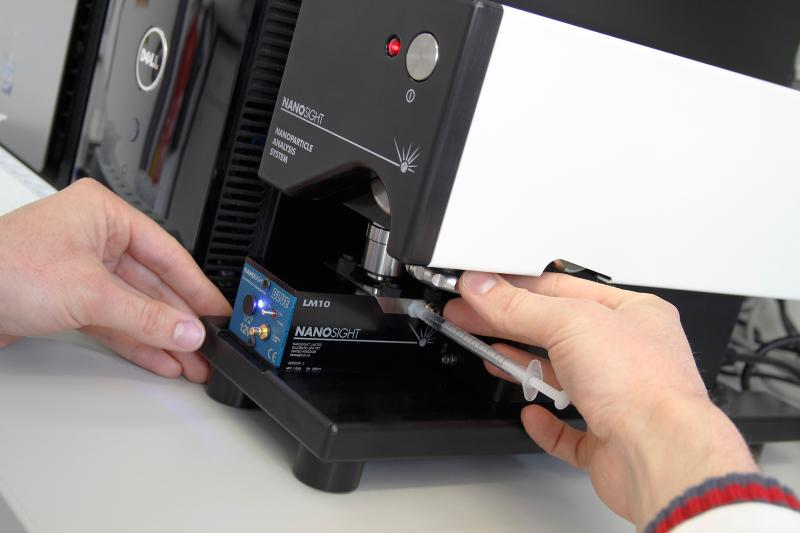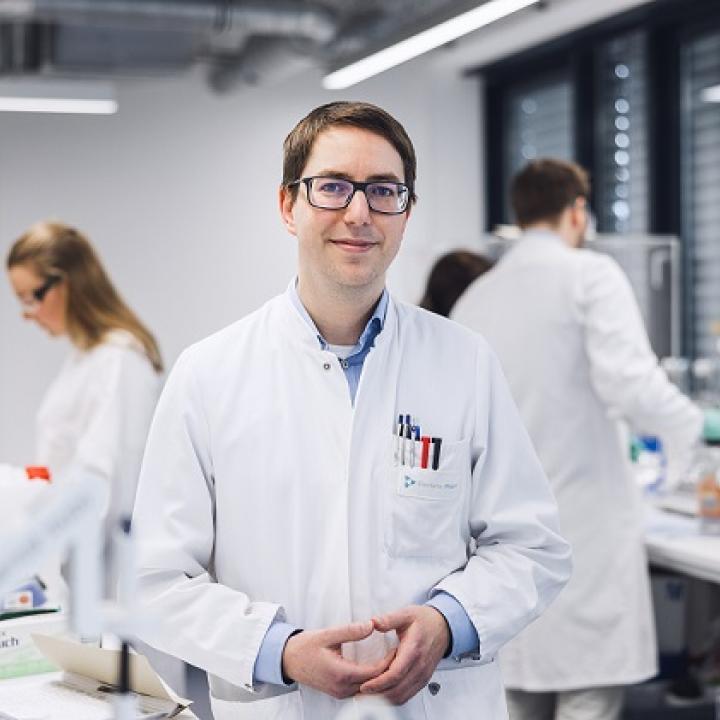Nanoparticle tracking analysis (NTA)
Nanoparticle tracking analysis (NTA) is a powerful and frequently applied technique for the sizing of particles in liquid samples.

In NTA, the sample is illuminated by a laser beam and the light scattered by particles moving under Brownian motion is recorded by a microscope camera. Individual particles are tracked, and their hydrodynamic size is obtained based on a modified Stokes-Einstein equation. Particle concentrations can be calculated as well, but only with moderate accuracy. For NTA of protein particles, the measurable size range is between about 50-100 nm to about 600-1,000 nm (depending on the light scattering intensity of the analyzed particles). The optimal particle concentration depends on the respective NTA system and on the particle size but is generally between 10^6 and 10^10 particles/mL.
NTA is mainly a research tool to characterize particle-based APIs (e.g., VLPs, liposomes, polymeric nanoparticles), to detect aggregates within protein formulations, or for total virus particle detection, provided that the size is large enough. It delivers a better size resolution for polydisperse samples when compared to dynamic light scattering [DLS], however, protein monomers are generally too small to be detected. NTA is further employed to observe relative changes in particle concentration, e.g., during stability studies.
For monodisperse samples, NTA is straightforward and quick to perform. Analysis of polydisperse samples, however, might require a method development. The time required for a sample analysis and data processing is usually longer than for dynamic light scattering, but shorter than for resonant mass measurement [RMM].
Quality & biosafety level of this method
We provide all our analytical services with the highest quality standards. Each project is carried out by experienced scientists and every report or data presentation is comprehensively checked by a scientific reviewer. We offer this technology with the following quality and biosafety level:
Standardized methods or dedicated method development
For common sample types, we can often apply standardized methods with little setup effort. On top of this, our experienced analytical scientists perform in-depth method development or method optimization tailored to your drug substance, product type and development phase.
Method development
During method development, we tailor sample preparation, method settings, and data analysis to the needs of your project and sample.
For this purpose, we include a representative sample and, where available, suitable reference standards and stressed/degraded materials. This way, our analytical scientists can design a method that is highly suitable for your needs, stability indicating, as well as robust and repeatable. Upon request, we compile a detailed method description for your records.
This can be applied under R&D. Read more
Method qualification
A method qualification is the initial assessment of the performance of an analytical procedure to show that it is suitable for the intended purpose.
During method qualification, our analytical scientists perform a documented testing that demonstrates that the analytical procedure meets certain acceptance criteria in several categories. These may include repeatability, linearity, intermediate precision, robustness and more. We compile a qualification plan and a qualification report including all relevant data.
This can be applied under R&D. Read more
Contact us
Contact us
Do you have any questions? Want to analyze your samples?


